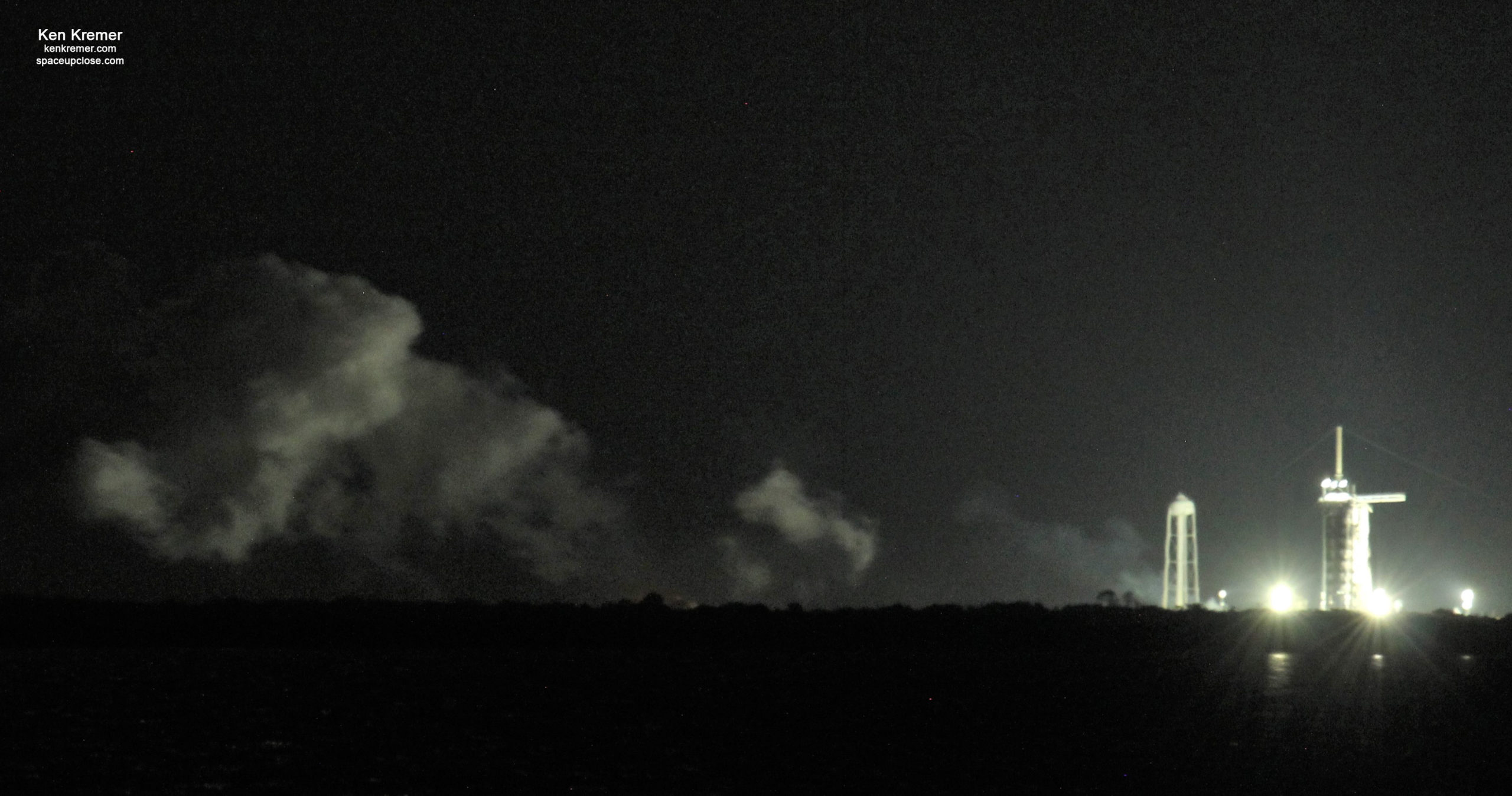
KENNEDY SPACE CENTER, FL – Just past midnight this morning Oct. 28, SpaceX engineers completed a brief engine test of the Falcon 9 rocket that will launch the maiden mission of the company’s Crew Dragon Endurance capsule and the multinational quartet of Crew-3 astronauts from America and Germany from Florida’s Spaceport to the International Space Station (ISS) on Halloween.
But even as the engine test went well, the team is keeping a sharp eye on the weather – especially the down range weather in the northern Atlantic Ocean along the trajectory where the capsule would fly and have to abort in case of a launch emergency problem with the rocket.
The commercial SpaceX Falcon 9 rocket surpassed a key milestone ahead of the Halloween morning launch on Sunday, Oct. 31 when the recycled rocket’s nine Merlin 1D first-stage engines roared to life for seven seconds at 1 a.m. this morning, Thursday, Oct. 28.
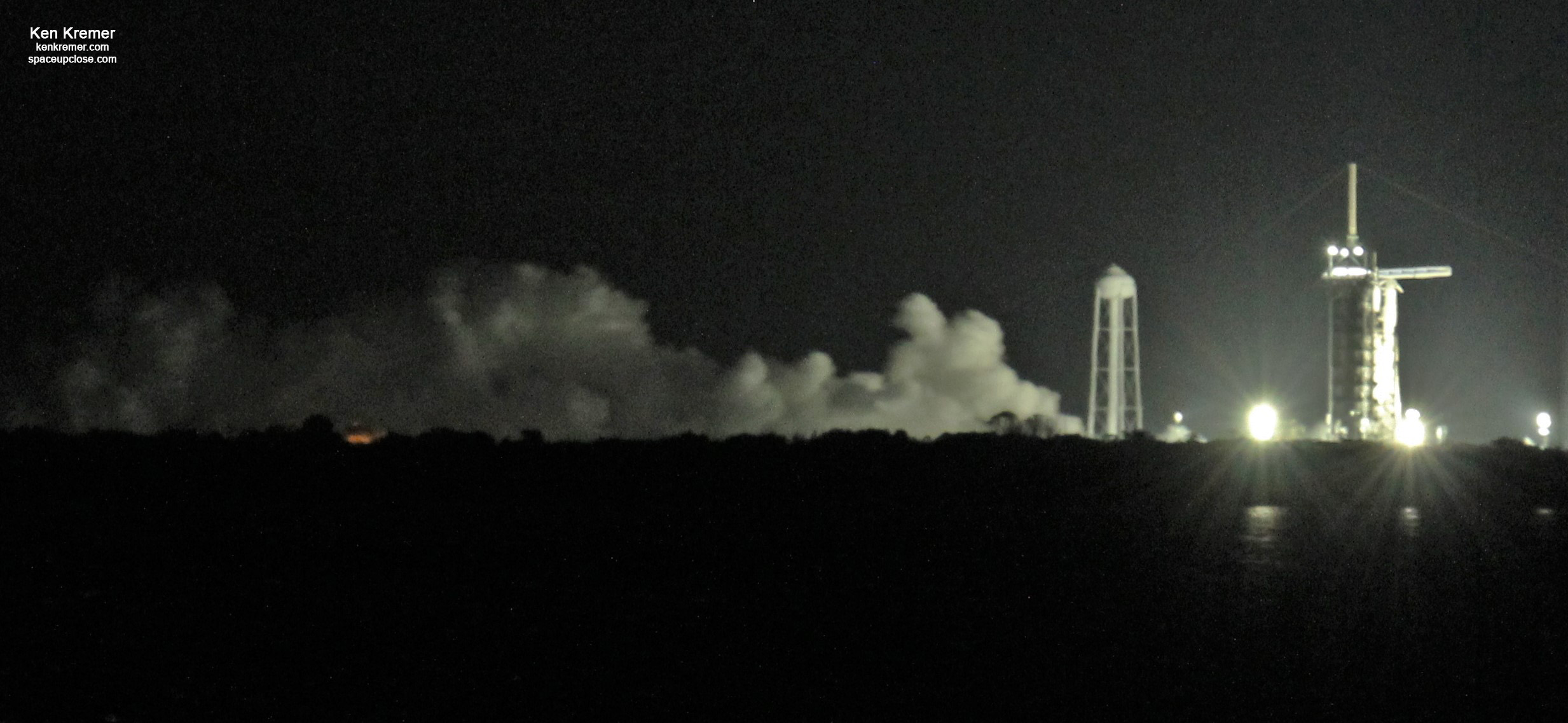
I watched the overnight engine test Thursday from nearby in Titusville, Fl, about a dozen miles away across the Indian River lagoon and observed the exhaust plume and vapor cloud emanating from the bottom of the booster blowing northwards from the flame trench – just barely visible in the total darkness.
From a distance the test appeared normal – however as always we awaited SpaceX confirmation of a good result.
Enjoy our gallery of the static fire test, rocket at pad 39A and astronaut arrival photos by Ken Kremer for Space UpClose.
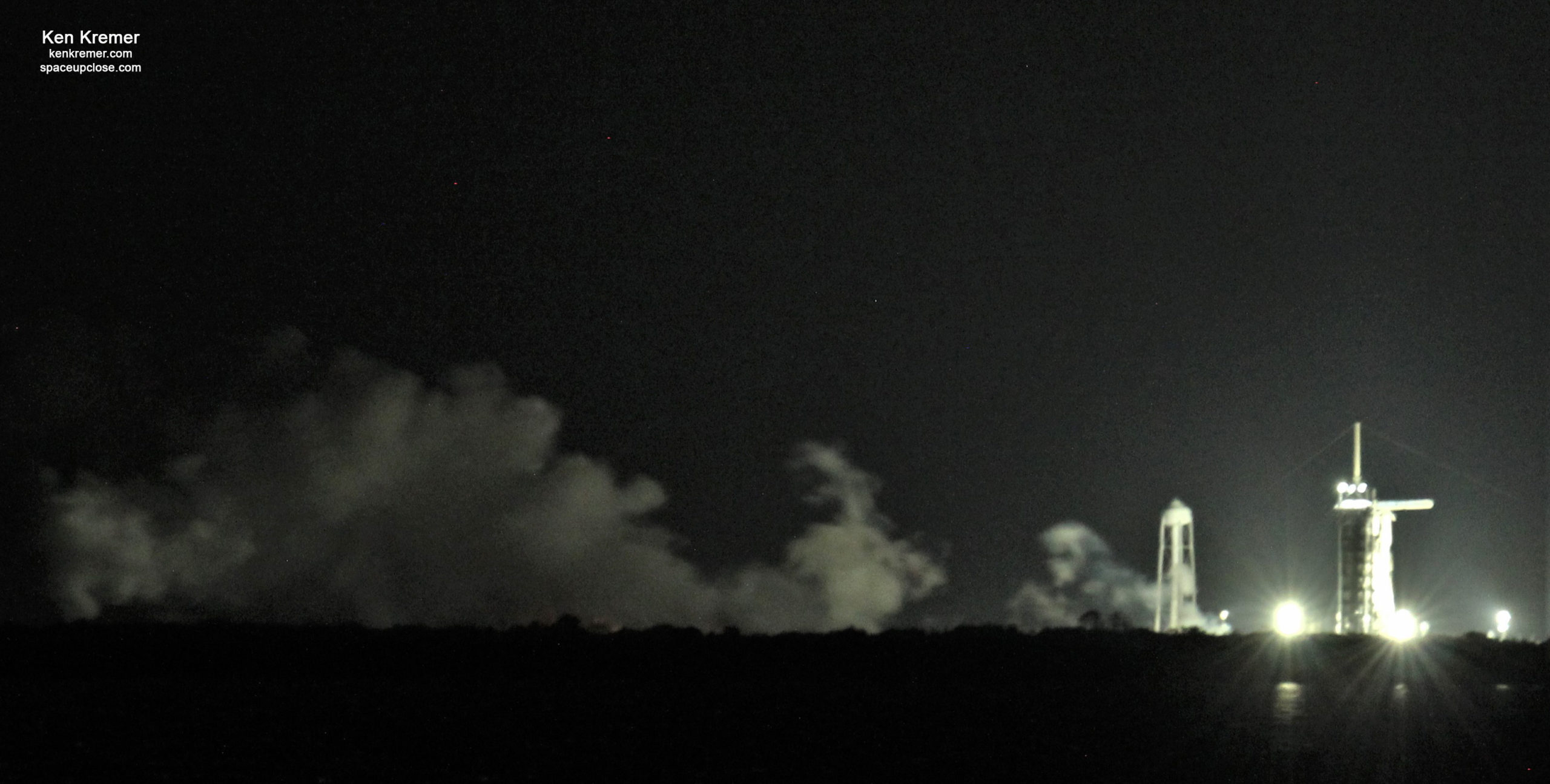
Almost 45 minutes later SpaceX did confirm a good test and targeted launch for Halloween.
NASA and SpaceX now are targeting 2:21 a.m. EDT (0721 GMT), Sunday, Oct. 31, for the agency’s Crew-3 launch on a SpaceX Falcon 9 rocket aboard a SpaceX Crew Dragon astronaut ferry ship to the orbiting research laboratory.
Although Space Force forecasters give an 80% chance of favorable launch conditions at KSC the risk level is rated high in the ascent recovery trajectory and moderate for booster recovery.
The dead of night hold down static fire test was successful SpaceX reported – thereby completing the routine but critical integrated static fire test of the Falcon 9 and Crew Dragon spacecraft while standing on the launch pad at Kennedy Space Center’s Launch Complex 39A in Florida and opening the path to the Halloween liftoff.
— SpaceX (@SpaceX) October 28, 2021
During the hold down static fire test, the team fueled the rocket’s first and second stages with liquid oxygen (LOX) and RP-1 propellants just like an actual launch, and a simulated countdown was carried out to the point of a brief engine ignition lasting seven seconds – briefly generating 1.7 million pounds of sea level thrust.
The brief seven second hold down test of all 9 first stage Merlin 1-D engines was part of the simulated countdown with the full propellant loading up to ignition.
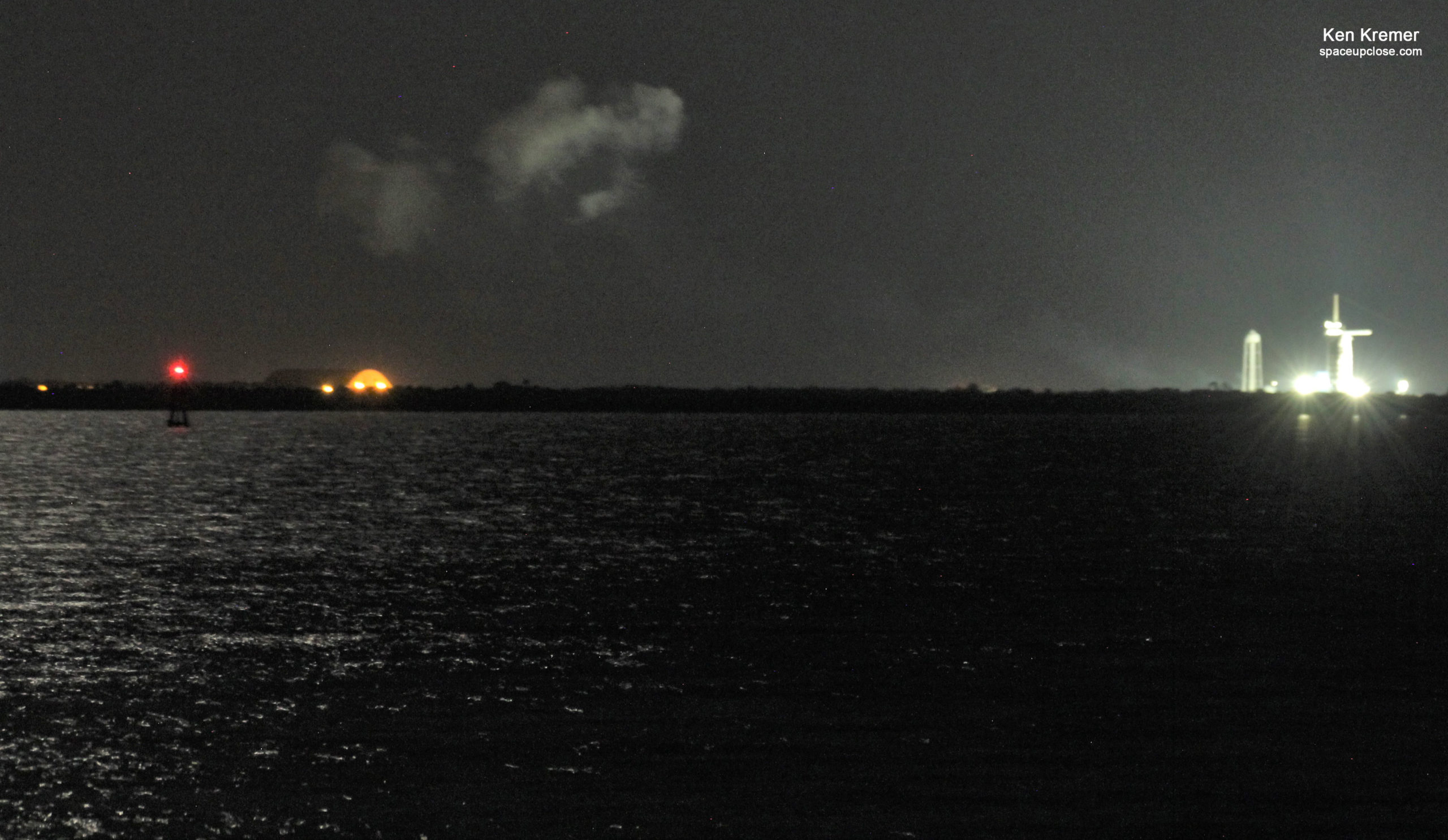
The static hot fire engine test was conducted Thursday morning at 1 a.m. EDT Oct 28 – in order to closely mimic the same exact actual launch preparations, procedures, propellant filling operations and close to the launch time by the launch team they will run through on launch day.
All 9 Merlin 1D first stage engines were ignited at 1 a.m. EDT to generate approx. 1.7 million pounds of thrust for seven seconds while hold-down clamps kept the 22-stpry tall Falcon 9 rocket firmly on the ground at pad 39A.
The 215-foot (65-meter)) Falcon 9 rocket was rolled out and up the incline to pad 39A Wednesday morning Oct. 27 from the hangar outside the pad perimeter fence and raised erect noontime prior to the engine test
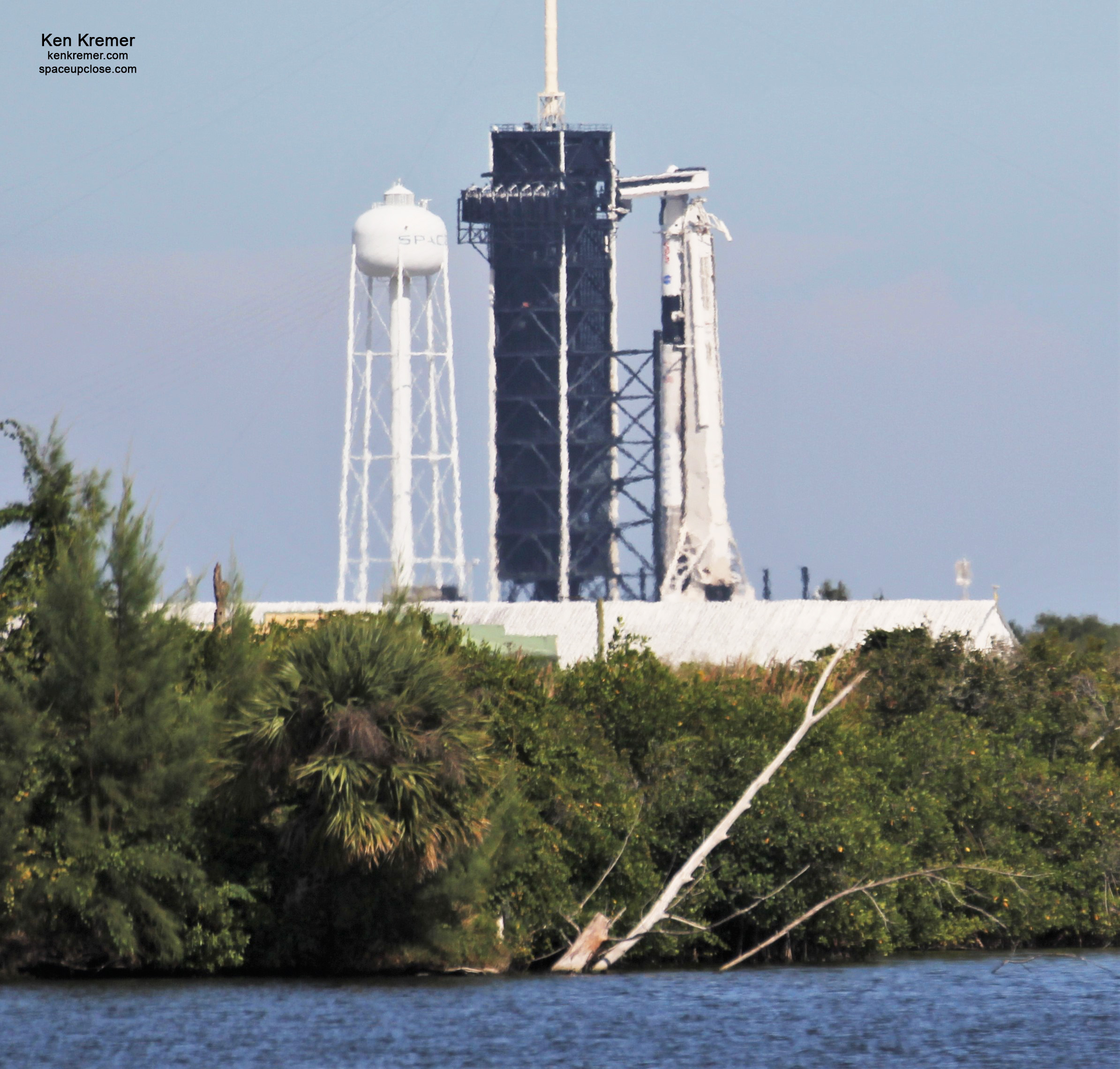
The quartet of NASA and ESA astronauts from America and Germany who will soon launch to the International Space Station (ISS) as part of NASA’s SpaceX Crew-3 mission arrived Tuesday afternoon, Oct. 26, at Florida’s Spaceport from their Texas training base to meet the media and undergo final training and preparations ahead of liftoff this weekend very early on Halloween morning – and the German astronaut on board will be the 600th person to reach space.
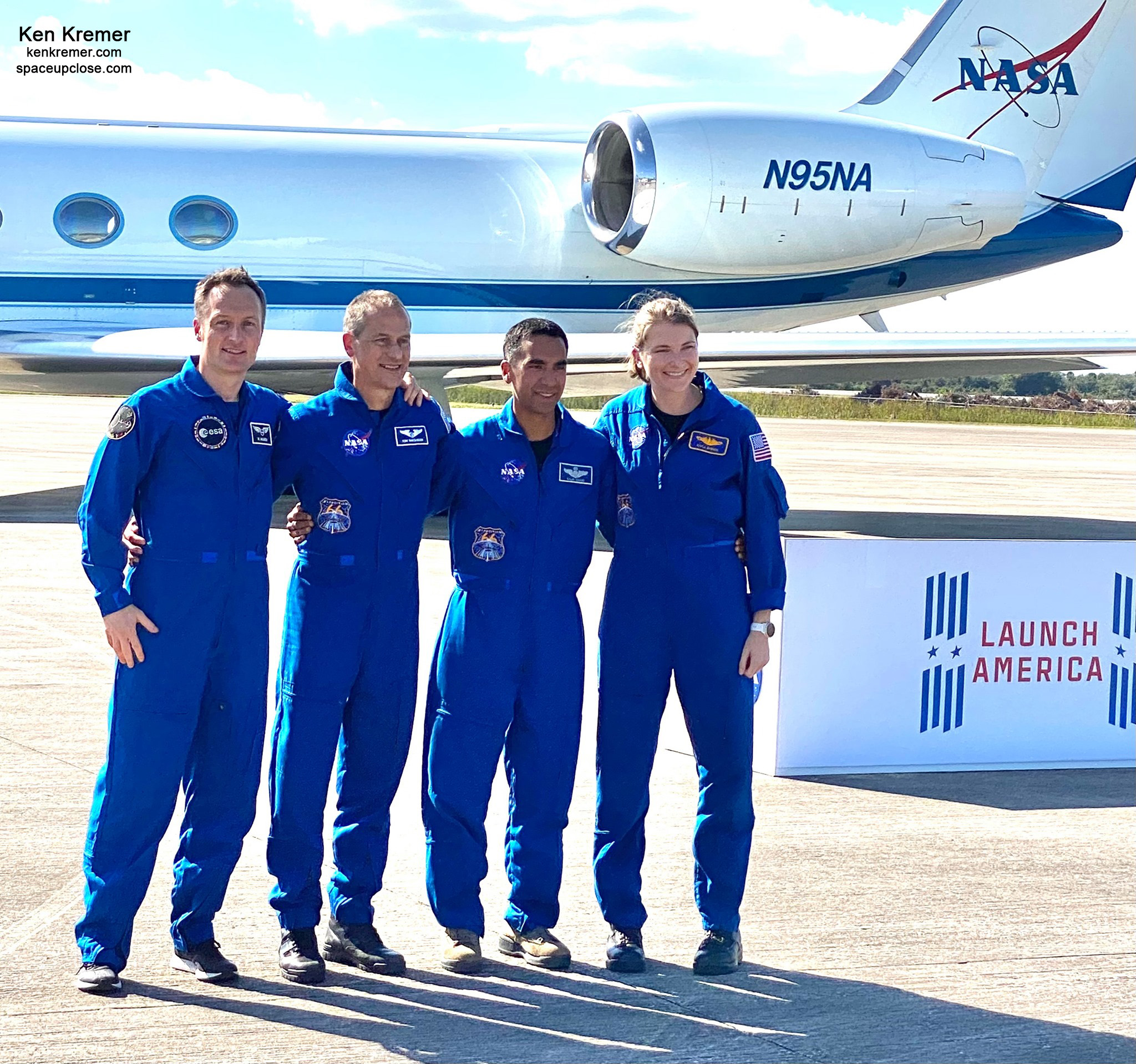
The multinational Crew-3 team comprising NASA astronauts Raja Chari, Tom Marshburn, and Kayla Barron, along with ESA (European Space Agency) astronaut Matthias Maurer from Germany, landed at the Launch and Landing Facility (formerly the SLF Shuttle Landing Facility aboard a NASA Gulfstream jet at the agency’s Kennedy Space Center after departing from Ellington Field near the agency’s Johnson Space Center in Houston.
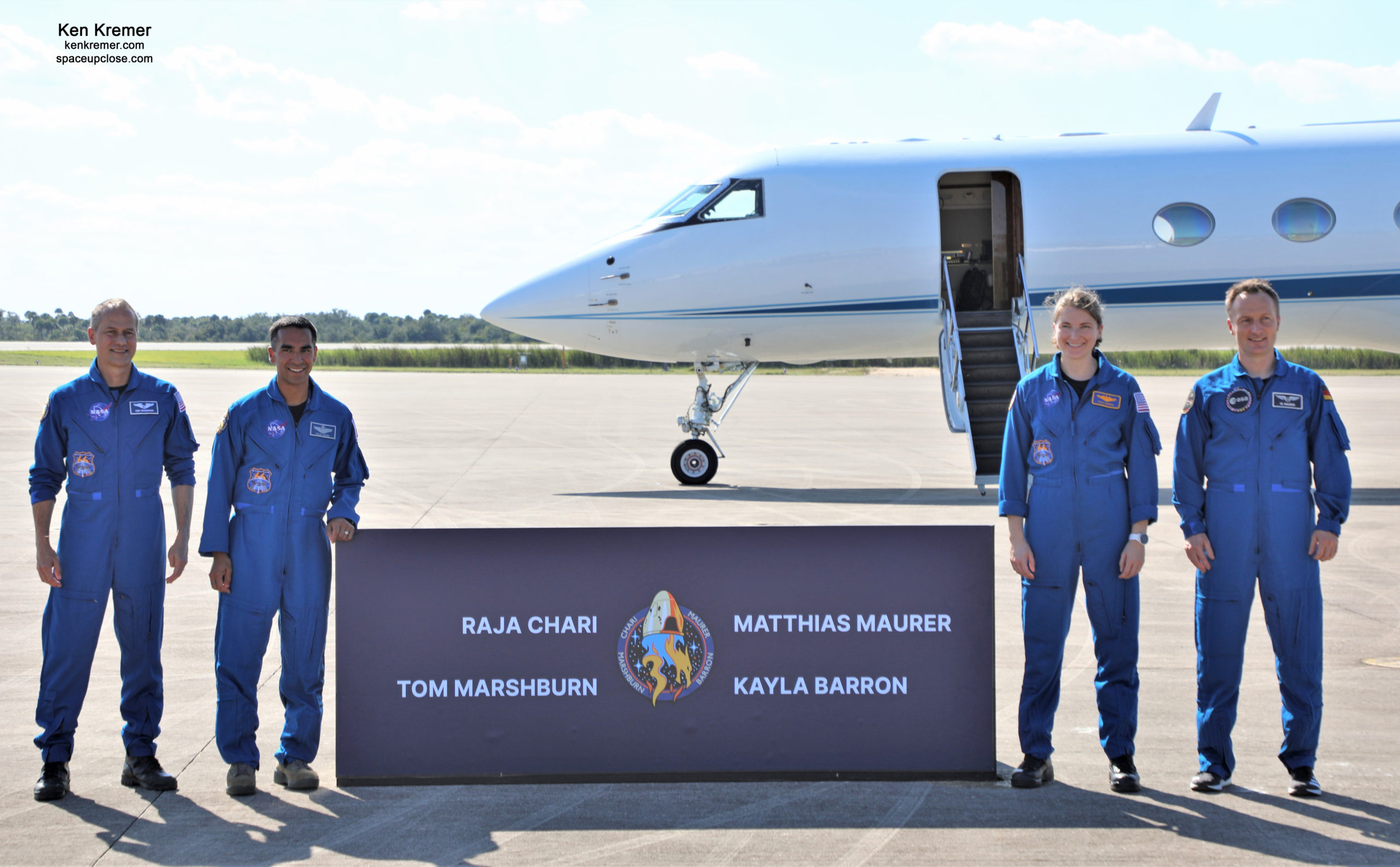
They will launch on the SpaceX Crew Dragon Endurance spacecraft and its Falcon 9 rocket from Launch Complex 39A at the agency’s Kennedy Space Center (KSC) in Florida.
Chari, Maurer, and Barron will all be flying as rookies on their first spaceflight each and are designated as astronauts 599, 600 and 601.
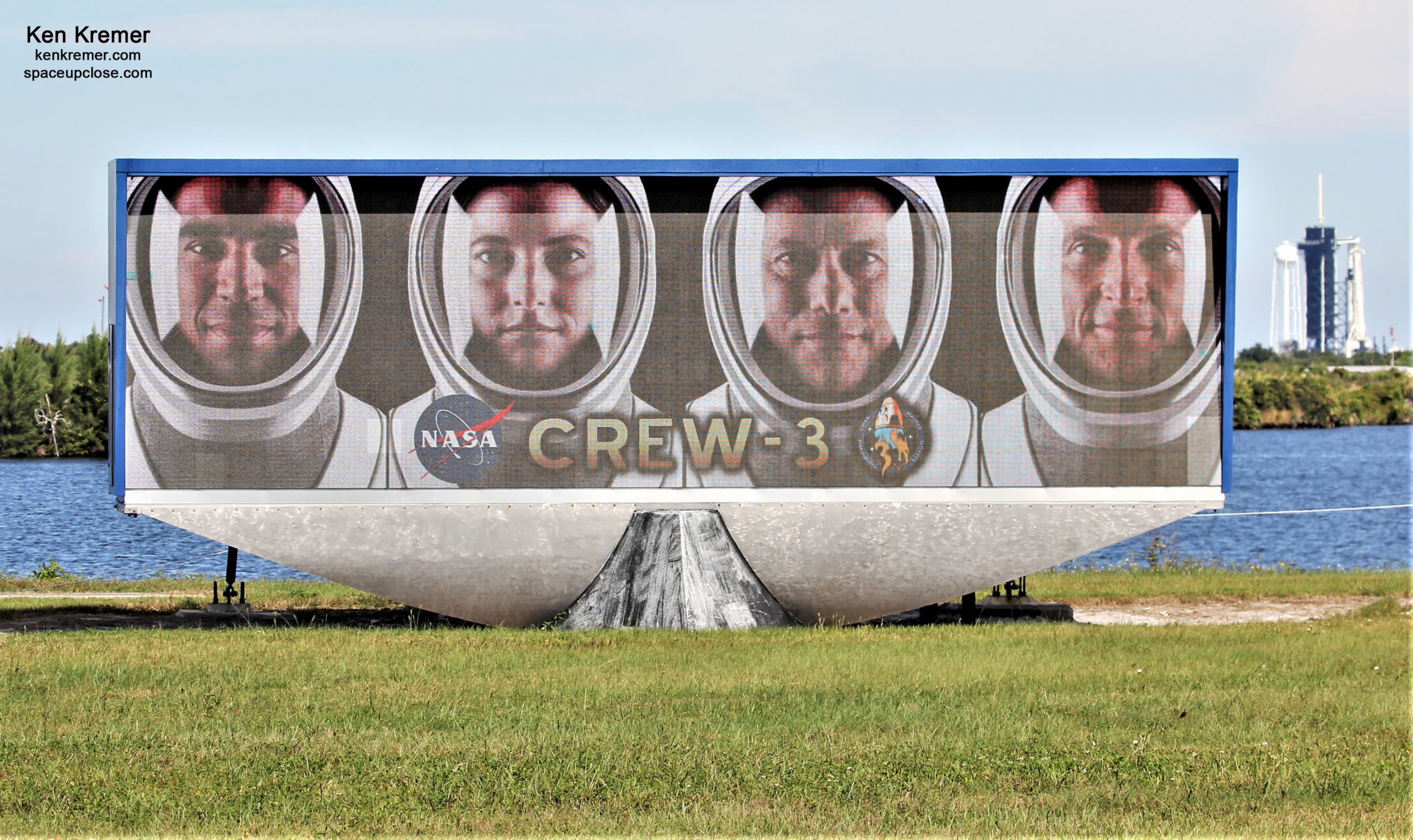
Matthias Maurer from Germany will enjoy the distinction of being the 600th human to reach space when he launches on Halloween with the Crew-3 quartet.
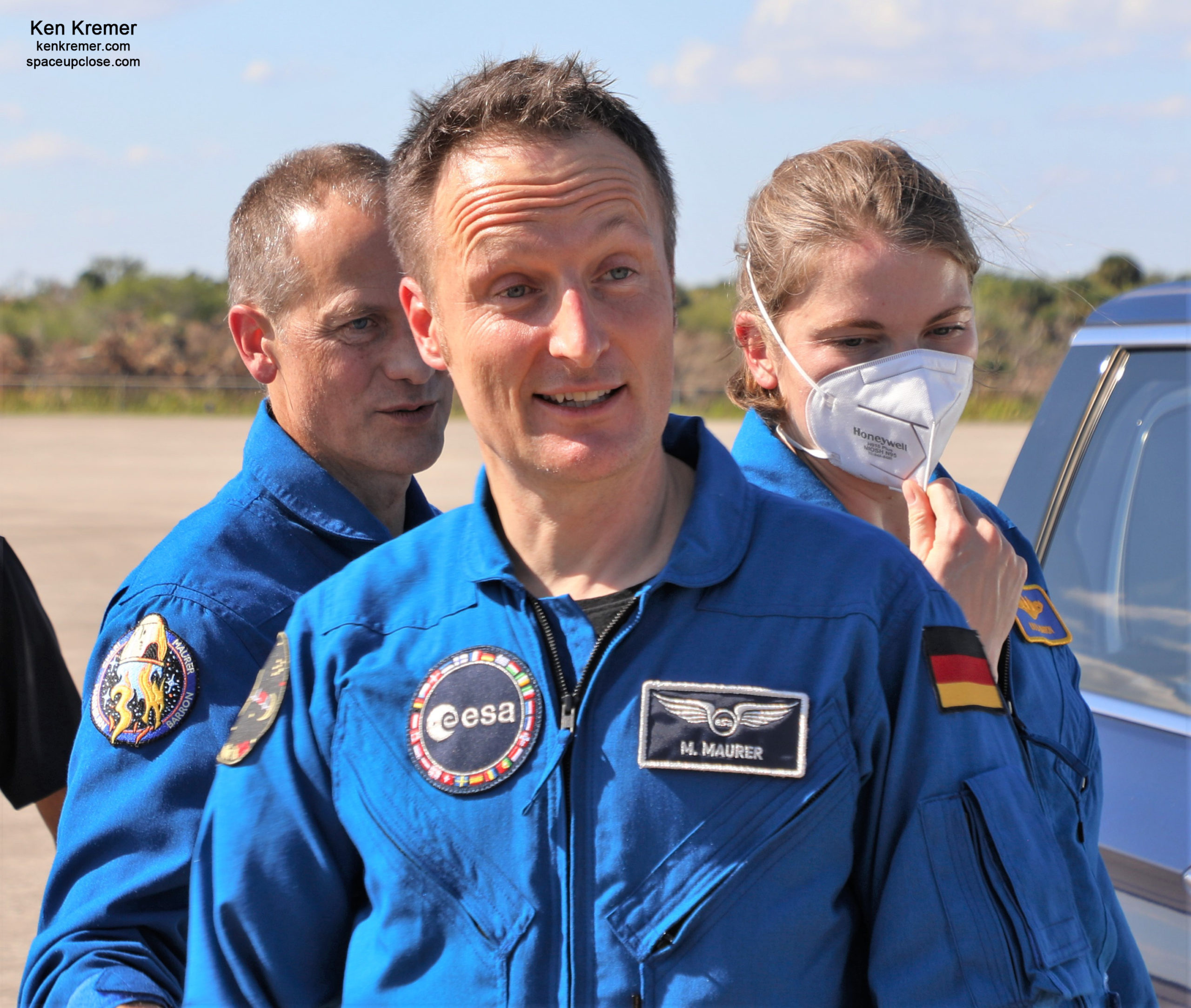
Chari will be the 599th and Barron will be the 601st person to reach space since 1961 when Soviet cosmonaut Yuri Gagarin became the first human into space reaching orbit at the dawn of the Space Age.
“I was the lucky one that got the round number, but we will all have fun in space,” Maurer said at Tuesday’s media Q & A arrival.
“Being No. 600 in 60 years, it makes 10 persons per year,” he said. “But I think in a very few years we will see an exponential rise of that because now we’re entering the era of commercial spaceflight, and all the suborbital flights, they also count in the statistics.”
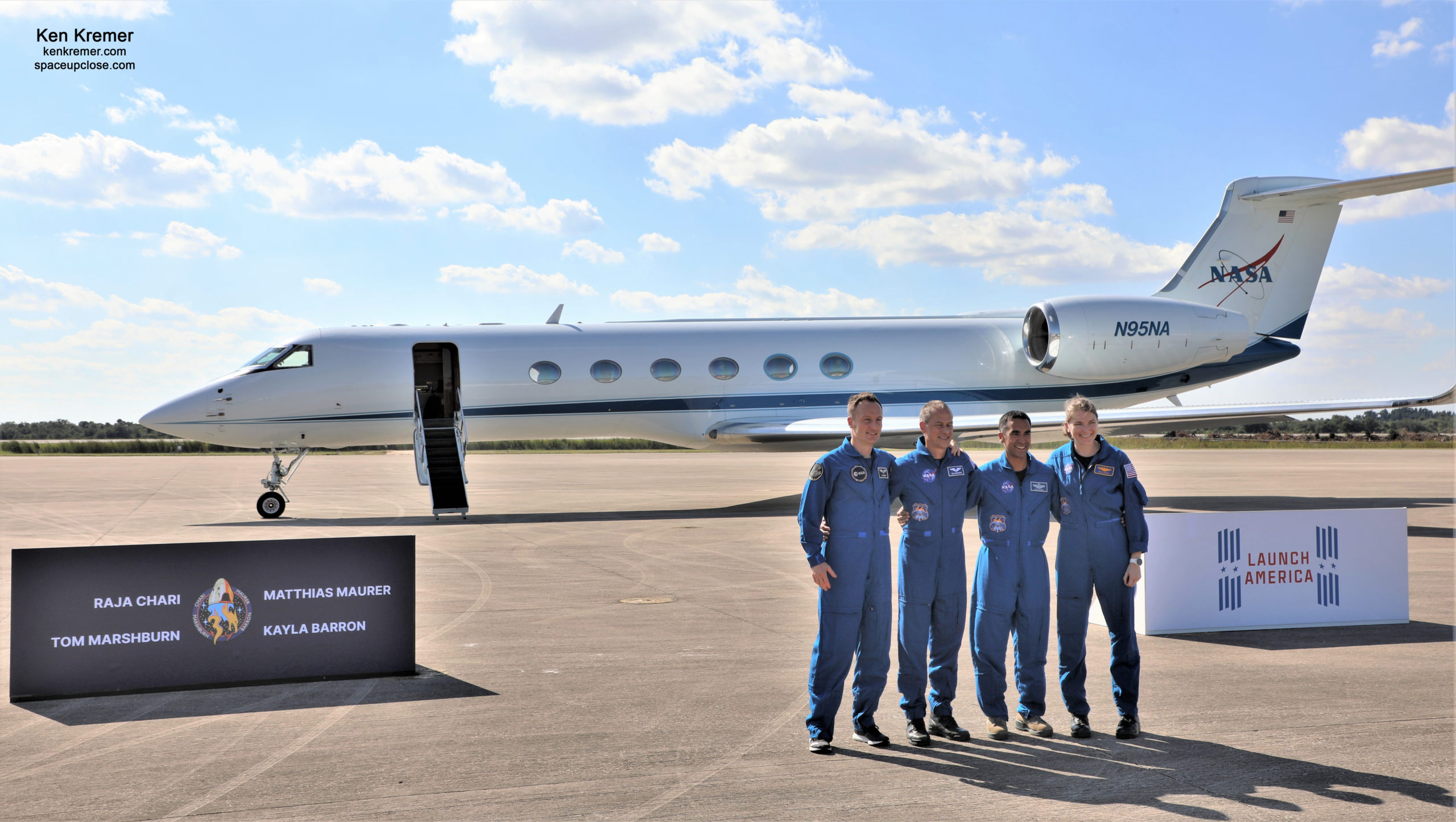
This marks the first launch of the new SpaceX Crew Dragon Endurance astronaut ferry ship.
It also counts as the first time a previously flown Dragon nose cone is reused
The Falcon 9 first stage is also previously flown – having initially launched the unpiloted SpaceX CRS-22 Cargo Dragon resupply mission to the ISS this past June.
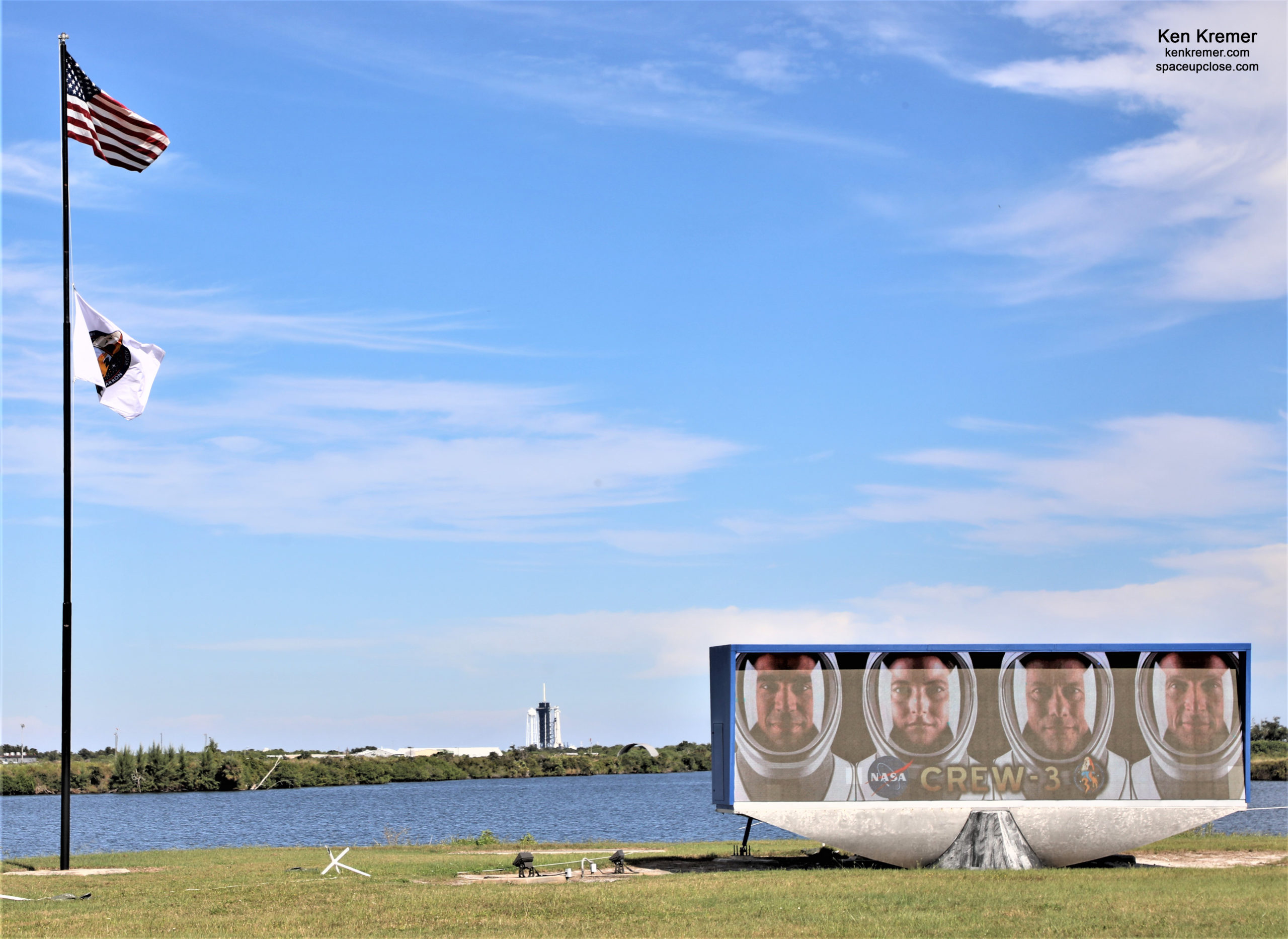
The Crew-3 astronauts will become the third crew to fly a full-duration six-month long science mission to the orbiting laboratory on a SpaceX Crew Dragon.
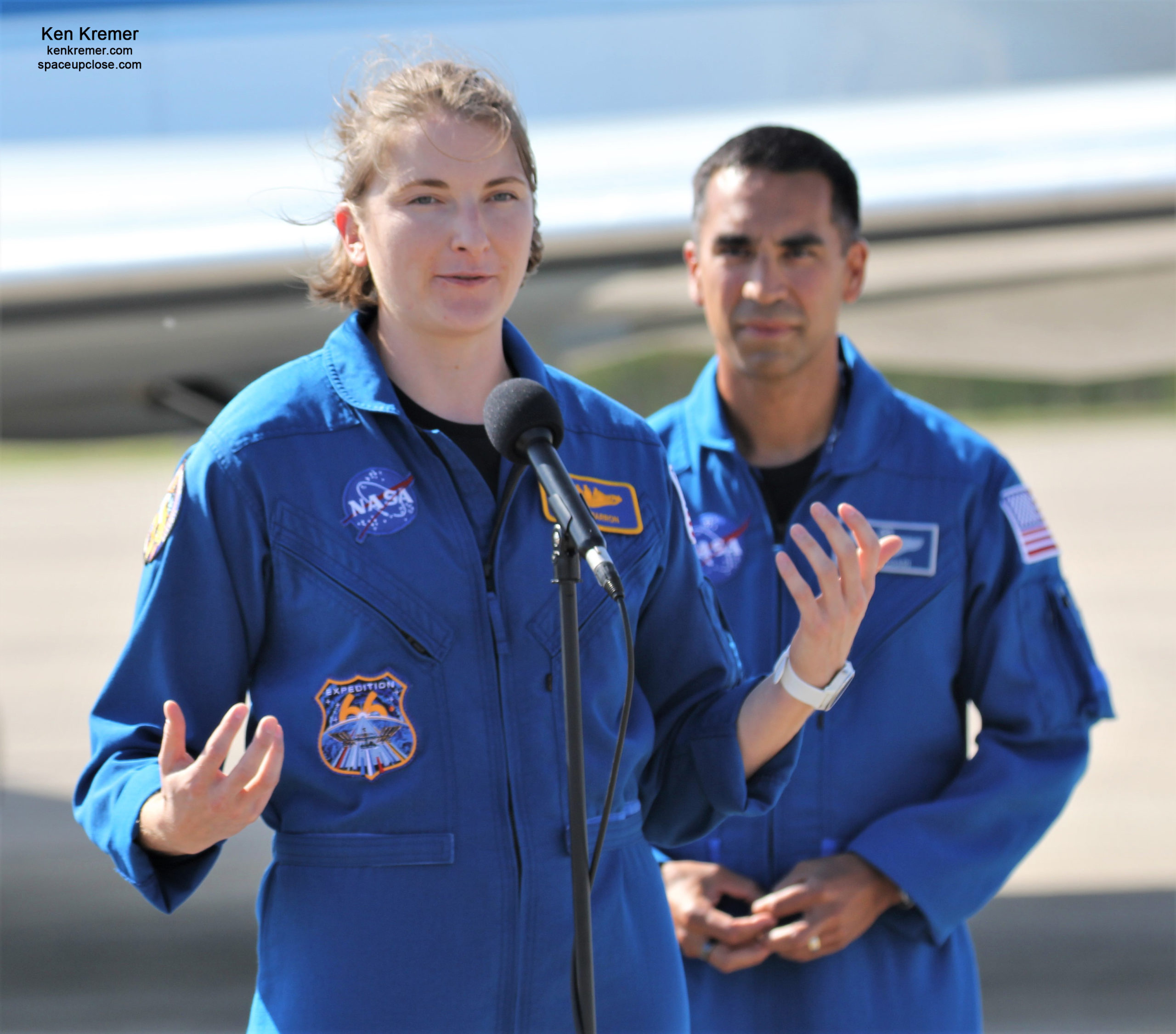
The next big activity is for the crew to participate in a countdown dry dress rehearsal at the agency’s Kennedy Space Center in Florida in preparation for the upcoming Crew-3 launch – which will simulate launch day activities minus the propellant loading
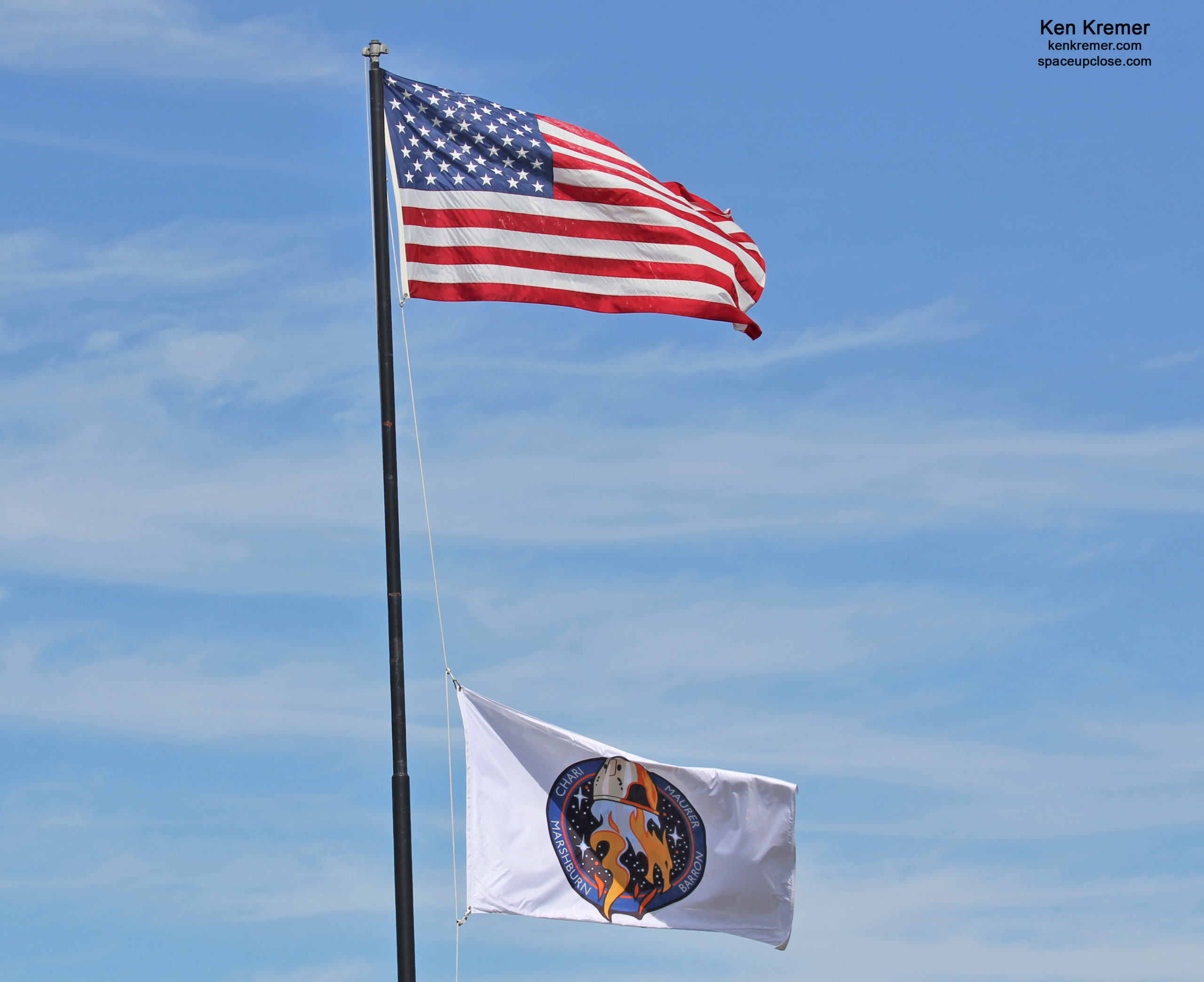
Ken’s photos of the static fire test were featured on WKMG CBS 6 Orlando TV News
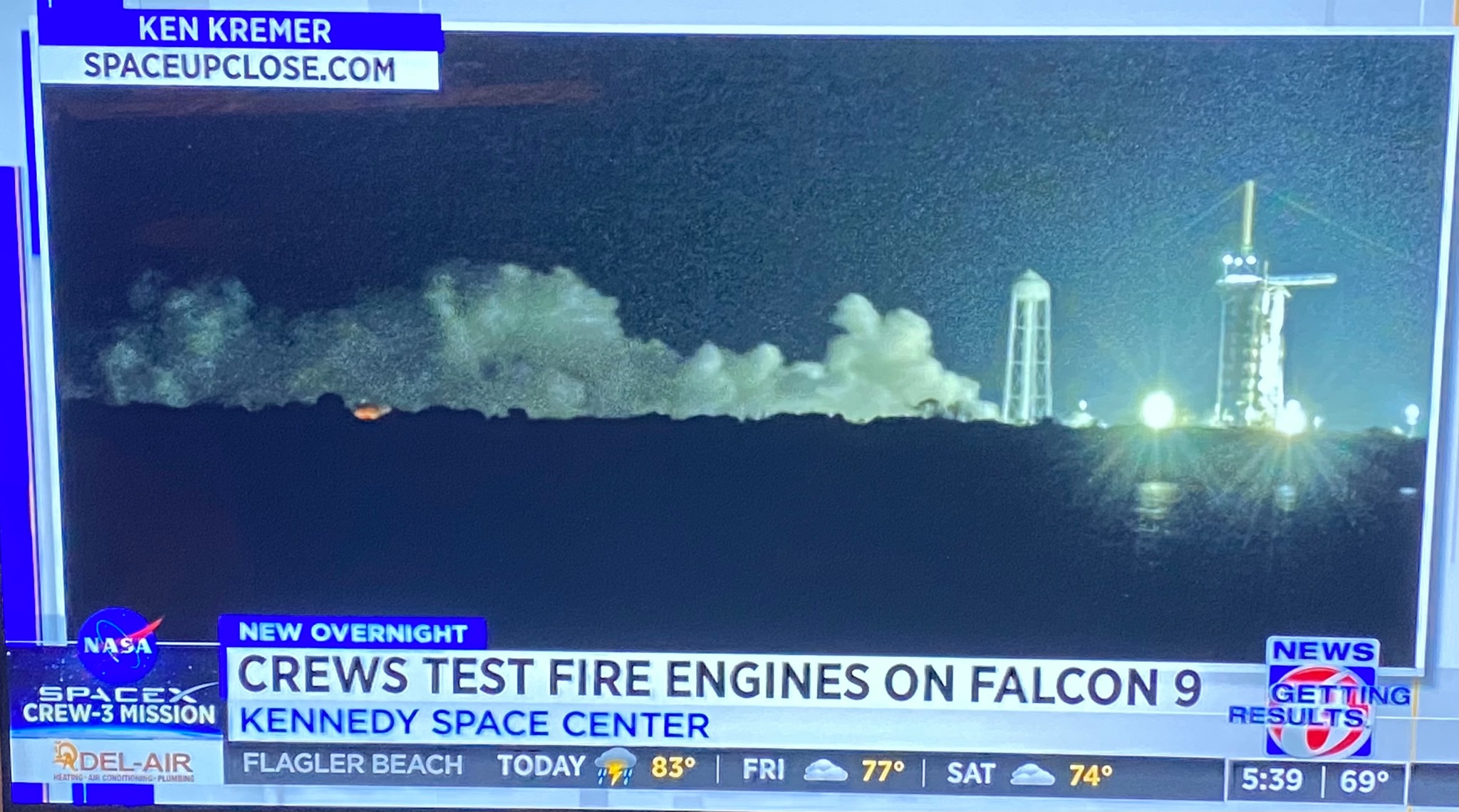
Ken is onsite at KSC and CCSFS for the Crew-3 mission launch campaign
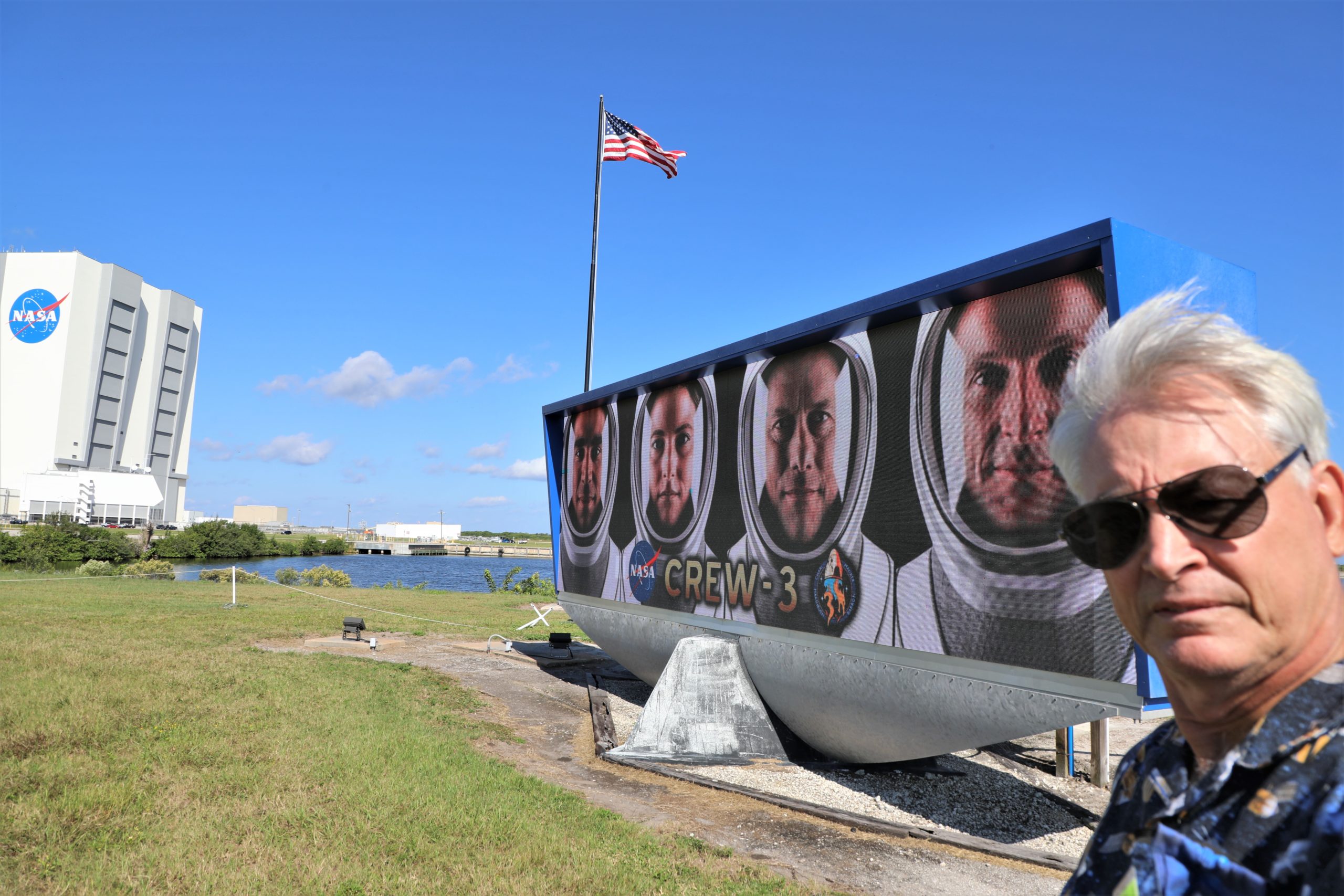
Watch Ken’s continuing reports about SpaceX Crew and Cargo Dragons, Artemis, SLS, Orion and NASA missions, Lucy Asteroid mission, Blue Origin and Space Tourism, SpaceX Starlink, Commercial Crew and Starliner and Crew Dragon and onsite for live reporting of upcoming and recent SpaceX and ULA launches including Crew 1 & 2 & 3, ISS, Solar Orbiter, Mars 2020 Perseverance and Curiosity rovers, NRO spysats and national security missions and more at the Kennedy Space Center and Cape Canaveral Space Force Station.
Stay tuned here for Ken’s continuing Earth and Planetary science and human spaceflight news: www.kenkremer.com –www.spaceupclose.com – twitter @ken_kremer – email: ken at kenkremer.com
Dr. Kremer is a research scientist and journalist based in the KSC area, active in outreach and interviewed regularly on TV and radio about space topics.
………….
Ken’s photos are for sale and he is available for lectures and outreach events
Please consider supporting Ken’s work by purchasing his photos and/or donating at Patreon:
https://www.patreon.com/kenkremer
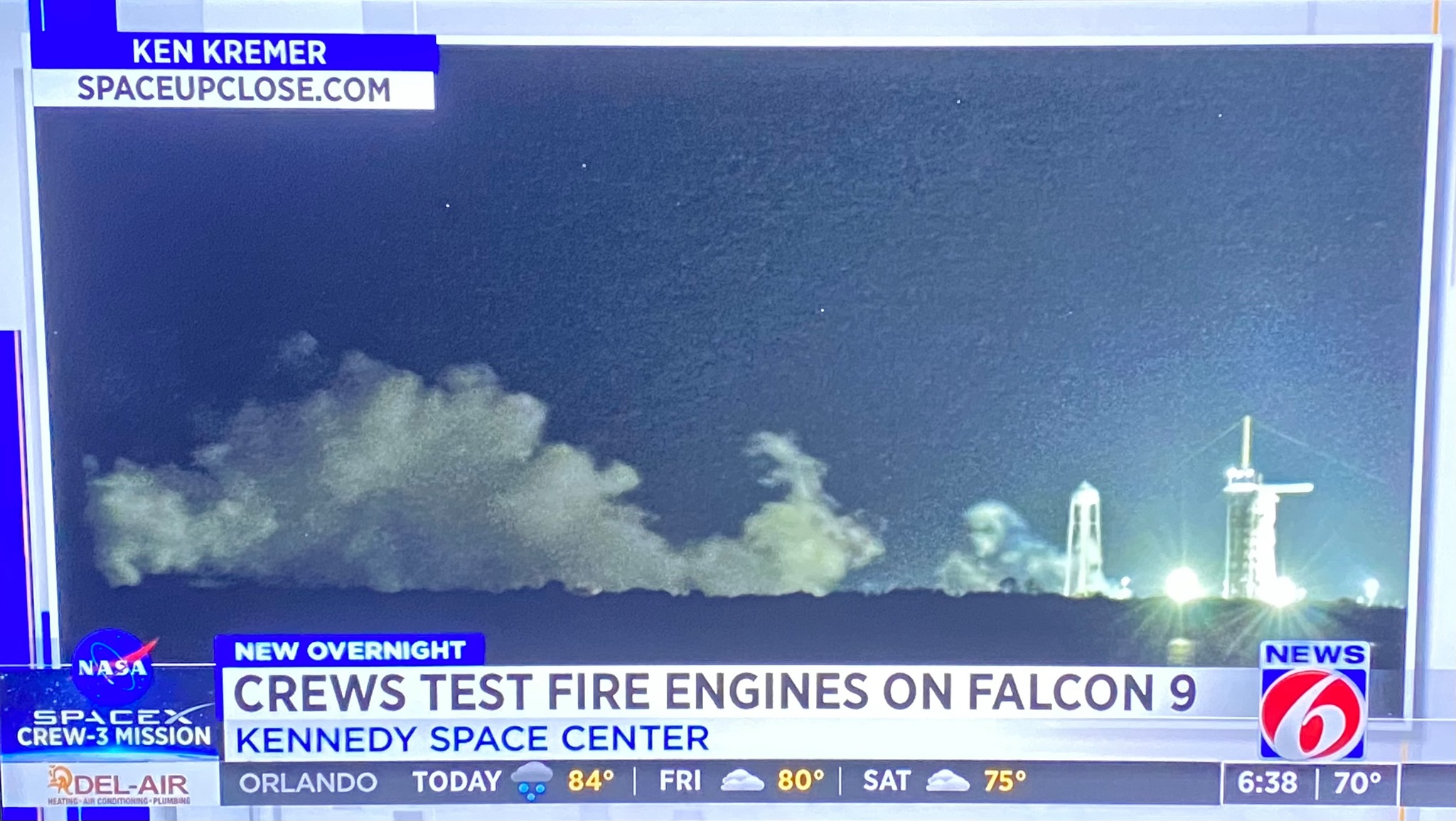
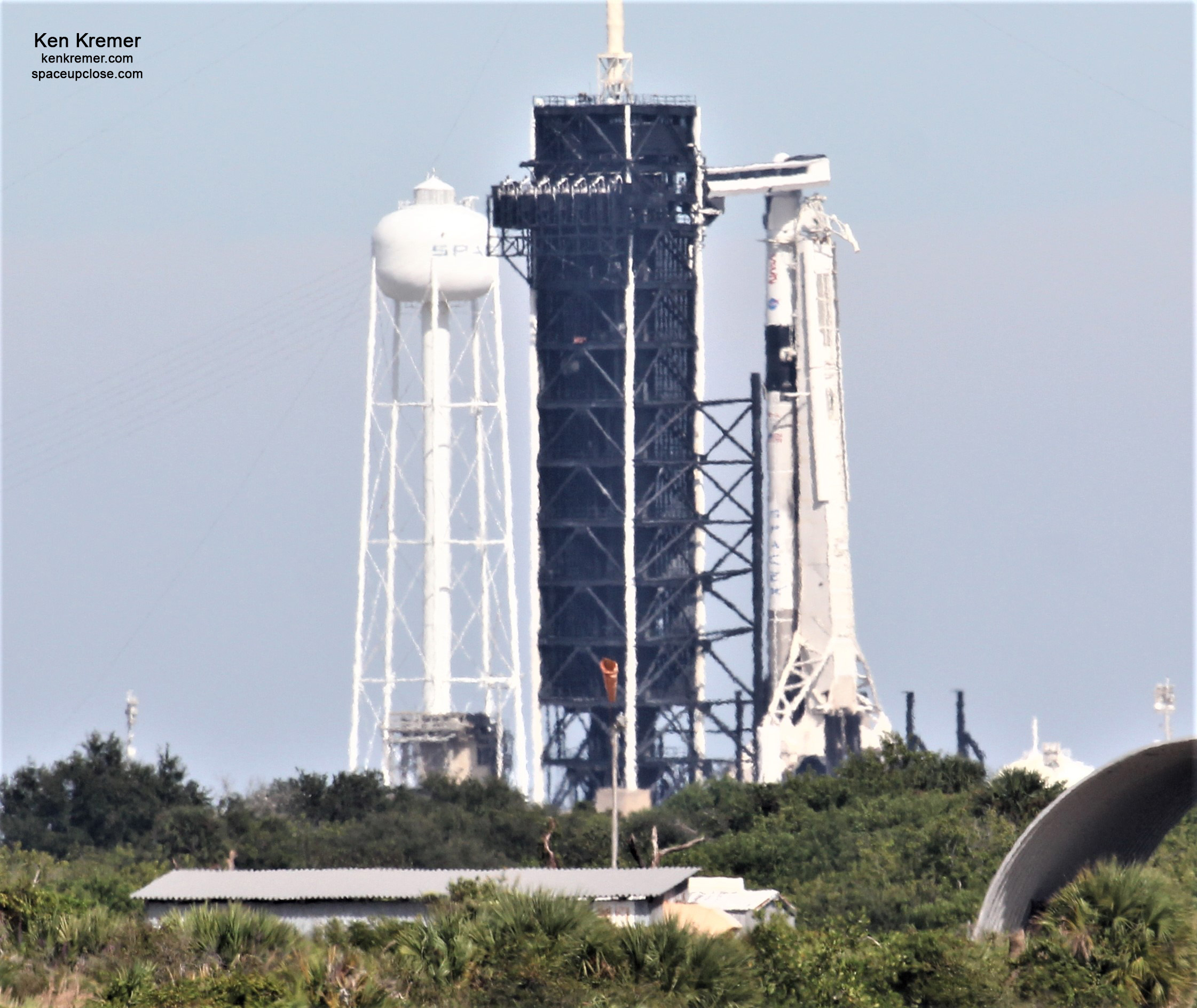
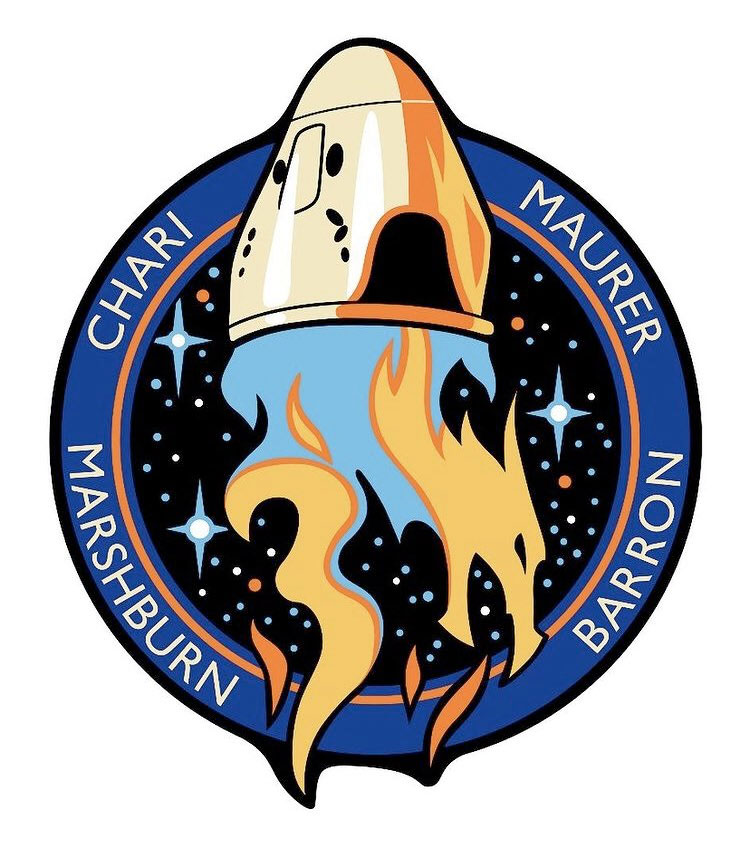
x



